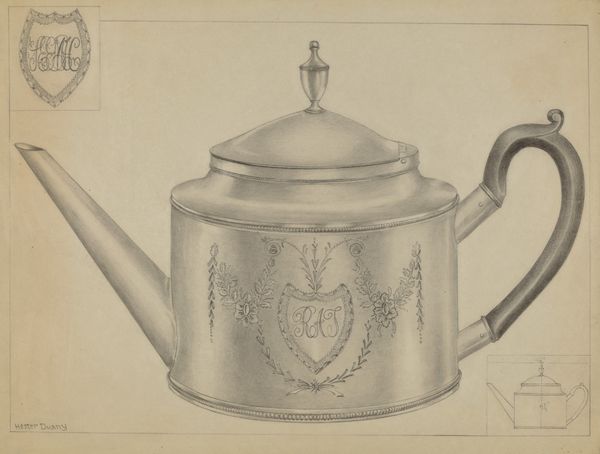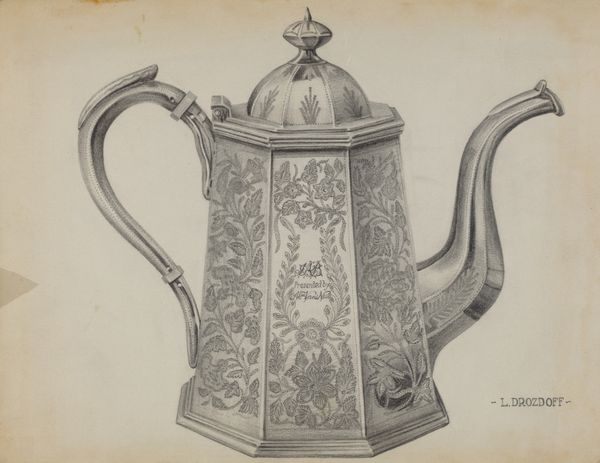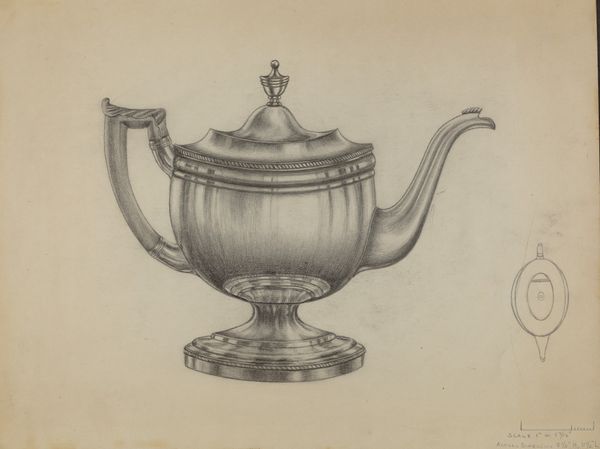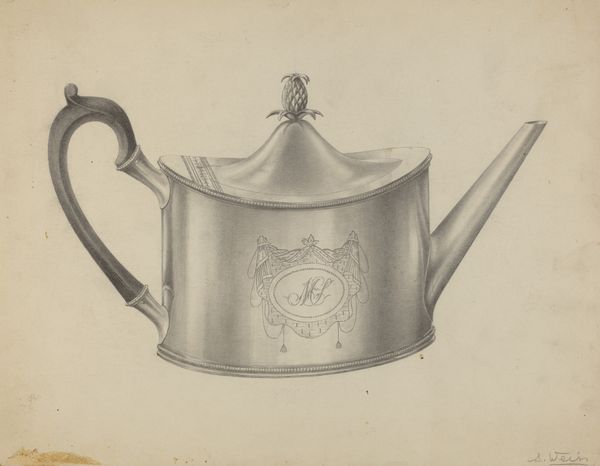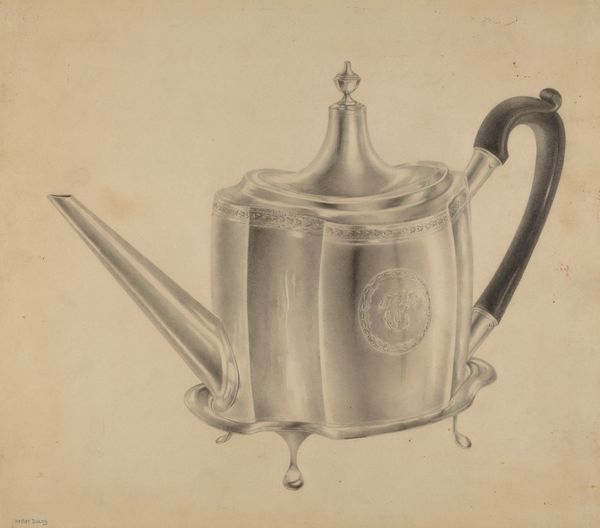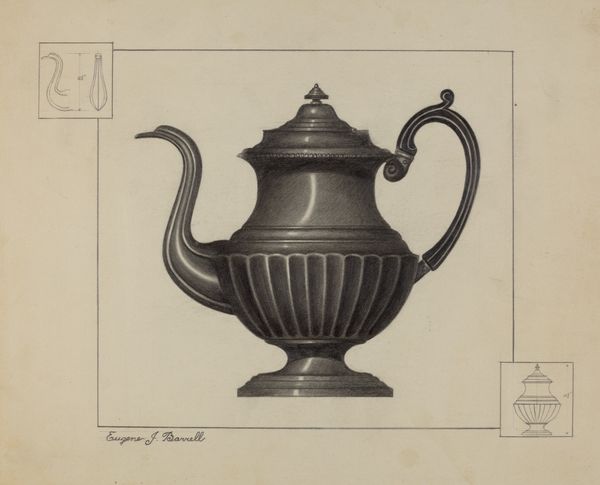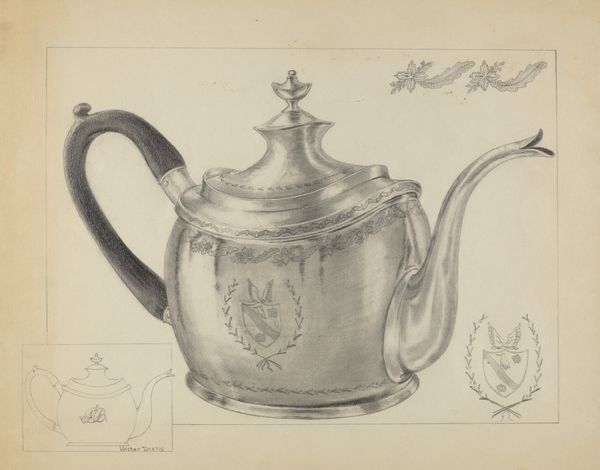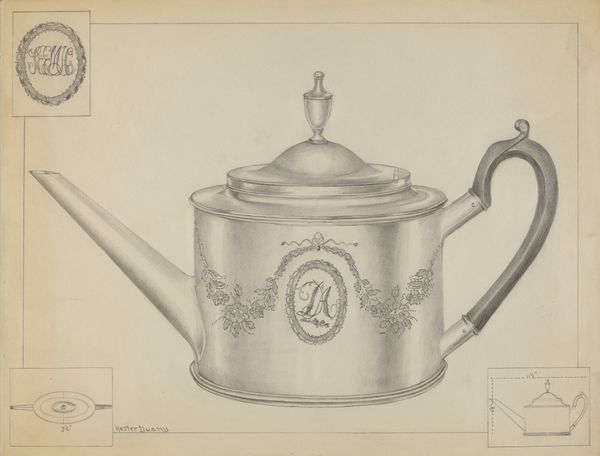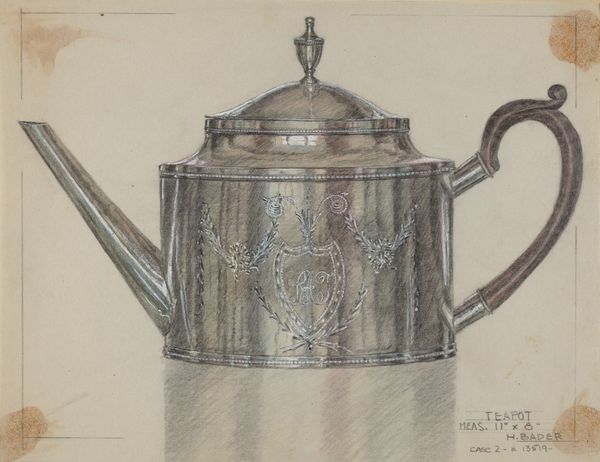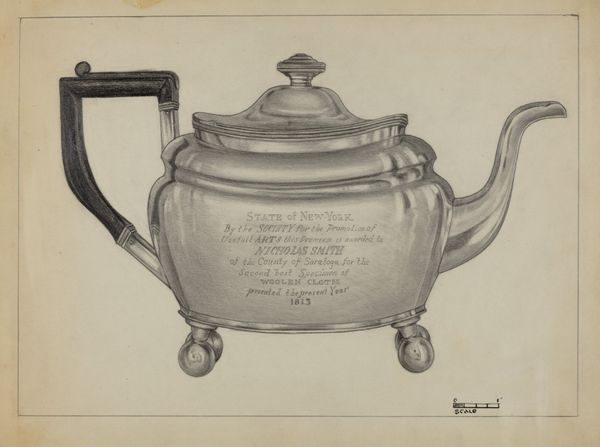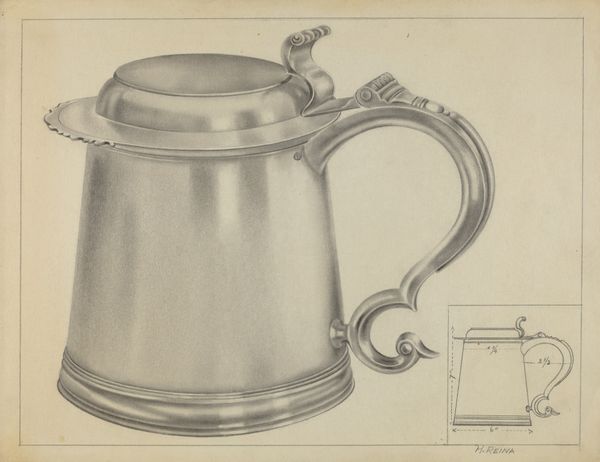
drawing, pencil
#
pencil drawn
#
drawing
#
pencil sketch
#
pencil drawing
#
geometric
#
pencil
#
sketchbook drawing
Dimensions: overall: 22.8 x 28.6 cm (9 x 11 1/4 in.) Original IAD Object: 8" high; 12" wide
Copyright: National Gallery of Art: CC0 1.0
Curator: This is Giacinto Capelli's "Silver Teapot with Tray," a pencil drawing from around 1936. Editor: My initial response is of quiet formality. The constrained palette and geometric composition create a mood that is rather reserved, almost severe. Curator: Indeed. Let’s look closely at how Capelli uses pencil. Notice the variation in pressure, creating subtle tonal shifts that simulate the reflective properties of the silver. It is less about representation, perhaps, and more about rendering an illusion. Editor: Yet this piece is loaded with signs of its time, and its social function. A silver teapot suggests leisure and domestic rituals specific to a certain class. Look at the monogram. The design subtly encodes exclusivity and privilege. It invites speculation about who might have owned such an object. Curator: But shouldn’t we appreciate Capelli's technical skill? Consider how he renders the light, almost flattening some facets to emphasize the angular structure of the teapot, highlighting its construction. It’s an exquisite study in form. Editor: And the function is inextricably tied to social performance. Who is this performance for? The silver tea set signifies a whole system of values. I imagine Capelli, at some point, interrogating what it means to depict such objects when poverty was widespread. Was it complicit or critical? Curator: It's intriguing how your perspective shifts my own. I still find myself drawn to the purely formal aspects – the way the light suggests the sleek surface of the teapot contrasted against the darker wooden handle – but your reading enriches it. Editor: And yours grounds mine. Sometimes, the stark beauty of the formal choices opens the way into deeper readings, urging us to trace those forms to their origin in experience.
Comments
No comments
Be the first to comment and join the conversation on the ultimate creative platform.
